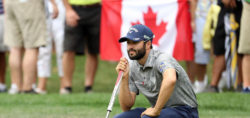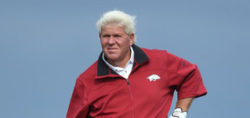The Perks And Pressures Of The Modern Tour Caddie

The Tour caddie has evolved over the years from near carnie vagabonds to astute college educated course partners. It can be lucrative with a good portion earning six-figures annually. But with that comes increased pressure and expectations to keep their bags.
GolfWorld’s John Feinstein writes a good piece of the evolvement and subsequent pressures and perks of the modern Tour caddie. Some of the stories of how caddies save money when traveling are eye-opening.
In those days, most caddies were guaranteed only $25 a week—and they paid their expenses. The only way to make money was for the player to make the cut, in which case the caddie got 5 percent of his winnings. A top 10 brought 7 percent, and a win brought 10 percent. Those rates have stayed essentially the same, although weekly salaries are much higher now and some longtime caddies have contracts with players that pay them more. As the purses grew, so did the money caddies were making.
Nowadays, it’s often an agent who contacts a caddie about working for a player. “It’s more like going through a committee than just dealing with a player,” says Mike (Fluff) Cowan, who has had three bags—Peter Jacobsen for 18 years, Tiger Woods for three and Jim Furyk for 19—for most of his career. When Cowan worked for K.J. Choi for several weeks this year when Furyk wasn’t playing, it was Choi’s agent who called him.
Caddie: ‘I THOUGHT I’D TRAVEL FOR A YEAR OR TWO AND GO HOME TO COLLEGE OR GET A JOB AT JOHN DEERE. I STILL HAVEN’T GONE HOME.’
During the 2016-’17 season, 102 players on the PGA Tour made at least $1 million, and 52 more made at least that much on the European Tour. That means about that many caddies made at least $100,000—some considerably more. It also means players expect more. During 2017, three longtime, high-profile player-caddie relationships ended: Mickelson and Mackay split after 25 years; Rory McIlroy fired J.P. Fitzgerald, the only caddie who had ever worked for him as a pro; and Jason Day decided that Colin Swatton, his longtime mentor and teacher, would no longer caddie for him.
Mackay believes one way for a caddie to have a long-term relationship with a top player is to not get too close. “There were times when I just decided I had to give Phil some space,” he says. “He was always great about offering me a ride on his plane. It was tempting, but sometimes I said no.”
“Sometimes,” Cowan says, “you deal with the agent, the teacher, the psychologist. You feel like you’re running for office.”






